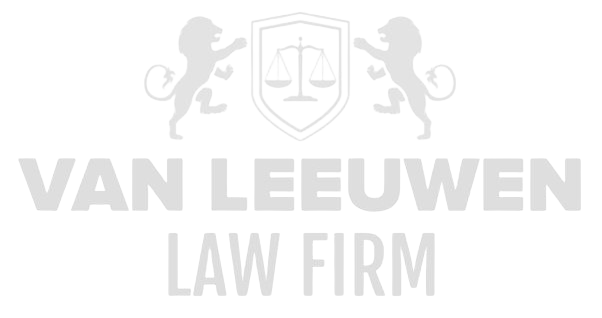In a world where regulation is becoming increasingly complex and financial, digital, and technological markets are evolving rapidly, there is a growing need for legal coordination across multiple levels of governance. Within the European Union, with its unique combination of supranational regulation and member state-specific legislation, the interaction between EU institutions, national authorities, and decentralized supervisory bodies represents a matter of critical importance. This multi-layered structure generates both challenges and opportunities. While EU legislation such as the General Data Protection Regulation (GDPR) and the Markets in Financial Instruments Directive (MiFID II) seeks to establish a uniform framework, national implementations can give rise to interpretative discrepancies, operational obstacles, and a fragmented enforcement practice. For businesses, compliance is therefore not merely a legal obligation but also a strategic dimension, with legal certainty and predictability serving as crucial parameters for investment decisions and market development.
Furthermore, the complexity of supervision and regulation is intensified by the presence of multiple supervisory authorities within the same jurisdiction. Authorities such as the Netherlands Authority for the Financial Markets (AFM), De Nederlandsche Bank (DNB), the Dutch Data Protection Authority (AP), and the Netherlands Authority for Consumers and Markets (ACM) each have specific mandates, powers, and supervisory strategies. While this diversity enables specialized expertise and facilitates risk-based supervision, it simultaneously contributes to fragmentation. Companies active in sectors such as fintech, data analytics, or artificial intelligence face a labyrinth of rules and enforcement mechanisms, where inconsistencies and overlaps between national and European frameworks significantly increase the compliance burden. Reducing this fragmentation and promoting coherence is therefore a fundamental prerequisite for a well-functioning legal and supervisory environment.
Legal Coordination Between the EU, National, and Decentralized Levels
The interaction between the European and national levels requires a profound understanding of the EU’s institutional architecture and its implications for national policy. EU legislation primarily functions as a harmonizing framework that sets minimum standards, while implementation and enforcement are often delegated to member states. This dual character means that national regulatory bodies such as DNB and AFM are simultaneously bound by EU obligations while retaining a certain degree of discretion in the execution of supervisory practices. The result is a complex mixture of binding directives, regulations, and national laws, with variations in the precision of definitions, supervisory procedures, and sanctioning mechanisms. For companies operating across borders, this necessitates a proactive compliance approach, in which both European and national regulations are mapped comprehensively and applied strategically.
An additional element of this coordination is the need to integrate decentralized supervisory authorities into a coherent legal framework. Municipal or regional supervisors often possess specific powers targeting local markets or niche sectors. While such decentralized oversight can contribute to more granular supervision, there is a risk that divergent interpretations of rules will create inconsistencies and uncertainty. Effective coordination between levels therefore requires clear escalation procedures, joint policy guidelines, and ongoing dialogue regarding the interpretation of legislation. In the absence of such mechanisms, legal disputes and enforcement conflicts may escalate, undermining predictability in the regulatory environment and increasing investment risks.
Furthermore, interinstitutional consultation structures, such as European supervisory colleges and joint task forces, play a crucial role in harmonizing interpretations and promoting best practices. These platforms provide a mechanism for knowledge sharing, standardization of operational procedures, and the development of joint enforcement strategies while taking into account the specific legal context of member states. For companies, a thorough understanding of both formal rules and informal supervisory expectations is essential to minimizing compliance risks. The extent to which national authorities participate in these European consultation structures directly influences the uniformity of enforcement and the degree of legal certainty companies can expect.
Fragmentation Among Supervisory Authorities
The presence of multiple supervisory authorities within the same jurisdiction can lead to significant fragmentation, with direct implications for compliance with laws and regulations. For example, AFM and DNB operate within the financial domain but focus on different aspects: AFM primarily addresses market conduct and transparency, whereas DNB concentrates on financial stability and prudential management. Meanwhile, AP and ACM supervise entirely different domains, ranging from data protection to competition and consumer law. This distribution of responsibilities creates potential overlap, where companies are confronted with diverging standards, reporting requirements, and enforcement practices. The challenge lies not only in fulfilling individual obligations but also in anticipating potential conflicts and implementing internal compliance processes that simultaneously address multiple supervisory authorities.
Fragmentation also manifests in operational approaches to supervision. Supervisory authorities employ different risk profiles, monitoring strategies, and sanction frameworks, resulting in a heterogeneous landscape of inspections, audits, and reporting requirements. For complex sectors such as fintech, where innovative products and services often have a cross-border character, this can lead to a cumulative compliance burden significantly higher than the sum of individual obligations. Companies must therefore strategically invest in internal compliance structures that are sufficiently flexible to integrate diverse supervisory requirements without compromising operational efficiency.
An additional aspect of this fragmentation is the legal uncertainty that arises when powers and responsibilities are not clearly defined. In cases where supervisory authorities exhibit overlaps or gaps, legal disputes may emerge regarding the correct interpretation and application of regulations. Such uncertainty can result in delays in product launches, increased legal costs, and potential reputational damage. Companies’ ability to manage these risks depends heavily on a thorough analysis of institutional structures, a forward-looking compliance strategy, and the capacity to communicate effectively with multiple regulatory bodies.
The Need for Uniform Enforcement Strategies
Uniformity in enforcement is essential to ensuring legal certainty and market efficiency. The absence of coordinated enforcement practices among supervisory authorities can lead to arbitrary or inconsistent sanctions, with companies facing divergent interpretations of the same regulations. This constitutes a direct threat to the predictability necessary for investment decisions and strategic planning. Developing joint enforcement strategies, including common guidelines, consultation mechanisms, and harmonized sanctions, contributes to a more stable and transparent regulatory environment.
Uniform enforcement is particularly important in the context of cross-border business operations. European companies and international market participants benefit from standardized supervisory mechanisms that facilitate cross-border activities and minimize legal risks. Achieving this requires not only coordination among national supervisory authorities but also alignment with supranational bodies and international regulatory initiatives. Without such coordination, companies remain vulnerable to discrepancies between jurisdictions, which can result in higher compliance costs and operational inefficiencies.
Finally, a uniform enforcement strategy enhances the legitimacy and credibility of supervisory authorities. When sanctions and supervisory practices are applied consistently, a clear signal is sent to the market regarding expected standards and conduct. This not only promotes compliance but also fosters a culture of transparency and accountability, encouraging companies to proactively identify and mitigate risks in alignment with both national and European regulations.
Overlap and Inconsistency in Regulation
Overlap and inconsistency constitute a structural challenge within complex sectors such as fintech, data analytics, and artificial intelligence. Rapid technological developments in these domains often outpace existing legislation, creating gaps and contradictions. Companies face diverse definitions, reporting obligations, and risk assessment criteria, which vary at both European and national levels. These discrepancies generate uncertainty and can impede innovation, as companies may be hesitant to introduce new products or services due to the risk of legal conflicts or inconsistent enforcement practices.
The complexity is further heightened by the interaction between rigid national rules and international soft law instruments. While EU regulations are binding and provide a uniform foundation, international guidelines, standards, and recommendations are often considered best practices rather than legal obligations. Companies must therefore navigate between strict statutory requirements and flexible, voluntary norms, which complicates both legal strategy and operational implementation. This creates a continuous tension between compliance with binding law and anticipation of norms not yet fully embedded in national legal systems.
In addition, inconsistencies have direct implications for enforcement practices. Supervisory authorities may reach different conclusions based on the same regulation, depending on interpretation, prioritization, and risk profiling. This necessitates a high level of legal expertise and strategic insight from companies to correctly interpret both the letter and spirit of the law and to act proactively in the face of potential regulatory conflicts. The challenge lies in establishing internal processes that are flexible enough to integrate diverse regulatory requirements while being rigorous enough to ensure compliance and minimize reputational risk.
Legal Certainty and Predictability for Enterprises
Legal certainty is the cornerstone of a well-functioning legal system and is essential for enterprises engaged in complex and often cross-border activities. In a fragmented supervisory landscape, differences in interpretation, enforcement, and operational application of regulatory frameworks can lead to uncertainty regarding legal obligations and potential sanctions. This carries direct economic implications: enterprises may face delays in product launches, incur significant costs for legal advice and compliance, or hesitate to invest in innovative technologies due to the risk of legal conflicts. Legal certainty is therefore not merely an abstract legal principle but a practical prerequisite for predictable and efficient business operations.
Predictability is closely intertwined with legal certainty, yet adds an operational dimension. Companies must not only know which rules apply but also how these rules are enforced in practice. The level of predictability is influenced by the consistency of supervisory authorities, the availability of clear guidance, and the transparency of enforcement practices. An inconsistent supervisory environment may force enterprises to manage divergent interpretations of the same regulatory provisions, causing inefficiencies and heightening operational risks. Promoting predictability therefore requires systematic coordination of enforcement between supervisory authorities, clear communication of expectations, and a robust legal framework that minimises interpretative ambiguities.
Moreover, legal certainty plays a crucial role in strengthening market confidence and promoting fair competition. Enterprises that can rely on consistent and transparent application of regulations are better positioned to align their strategies with long-term objectives and to develop innovative products and services without disproportionate legal risks. This enhances both market stability and the credibility of supervisory authorities, creating an environment in which legal compliance becomes not merely a duty but a strategic asset that adds value to business operations.
International Soft Law versus Hard National Frameworks
The interaction between international soft law instruments and binding national regulation constitutes a complex area of tension for enterprises. International standards, guidelines, and recommendations often provide flexible frameworks and best practices, yet they lack legally binding force. National legislation, by contrast, creates enforceable obligations directly applied by supervisory authorities. In their compliance strategies, companies must continually balance adherence to mandatory legal requirements with anticipation of normative guidelines that may evolve into future legal obligations. This duality necessitates deep legal analysis, operational adjustments, and strategic planning, particularly in sectors heavily dependent on technological innovation and cross-border activity.
Soft law has the potential to promote uniform standards and facilitate knowledge exchange between supervisory authorities and market participants; however, it may also produce uncertainty when interpretations differ across jurisdictions. National authorities may be reluctant to fully implement international recommendations, leading to discrepancies that increase compliance costs and complicate legal risks. Enterprises must therefore adopt a proactive approach, integrating both binding national obligations and non-binding international guidelines, and assessing the likelihood of future legislative developments.
This interaction also directly influences enforcement practices. Supervisory authorities may reference international standards in their decision-making but are typically not required to apply them in full. This creates a tension in which companies must account for both legal obligations and normative expectations. A robust compliance strategy must therefore encompass not only legal analysis but also monitoring of international developments, active participation in standard-setting initiatives, and the establishment of an internal framework for interpreting and implementing soft law norms.
New Supervisory Models Based on Risk Profiles
Traditional supervisory models—often centred on uniform inspections and reactive enforcement—are increasingly supplemented by risk-based approaches. These models focus on identifying enterprises and activities with a heightened potential for legal or operational risks, enabling supervisory authorities to allocate their resources more efficiently. Risk-based supervision requires extensive data analysis, continuous monitoring, and deep understanding of market dynamics, technologies, and business models. For companies, this means that compliance is no longer merely an administrative duty but an integrated component of strategic risk management processes.
The implementation of risk-based supervision also has legal implications. Supervisory authorities must be transparent about the criteria and methodologies they use to assess risks in order to prevent arbitrariness and discrimination. Enterprises therefore need not only to establish internal control systems but also to understand and document the underlying logic of risk assessments. This not only promotes compliance but also provides a defensive instrument in the event of enforcement disputes.
Furthermore, risk-based supervision fosters innovation within supervisory authorities themselves. Regulators are developing advanced monitoring tools, algorithms, and analytical models to predict risks and intervene proactively. For the market, this offers opportunities to anticipate supervisory expectations more rapidly, implement innovative compliance solutions, and gain strategic advantage through structured approaches to risk identification, mitigation, and reporting. The model underscores the importance of cooperation between supervisory authorities and enterprises, grounded in mutual understanding of risks and operational challenges.
Transparency Obligations and Accountability Requirements
Transparency obligations are an integral part of contemporary supervisory and regulatory frameworks, serving as mechanisms to safeguard trust in both markets and supervisory authorities. Enterprises are required to provide information about their operations, risk management, regulatory compliance, and governance structures. These obligations are not merely administrative but constitute an essential prerequisite for effective enforcement and risk control. A robust transparency system allows supervisory authorities to detect potential risks at an early stage, while enterprises gain insight into supervisory expectations and stakeholder concerns.
Accountability obligations build on transparency by requiring companies to justify their decisions and processes explicitly. This spans internal risk assessments as well as external reporting and audits, and demands a consistent, documented, and traceable approach. Failure to comply with accountability obligations may lead to sanctions, reputational harm, or reduced confidence from investors and clients. For enterprises, this means that compliance systems must not only meet formal requirements but also adequately capture and substantiate operational realities and decision-making logic.
Moreover, transparency and accountability exert a preventive effect. Through explicit reporting and visible control mechanisms, potential conflicts or risks can be identified and mitigated at an early stage. This fosters a culture of proactive compliance and strengthens the credibility of both enterprises and supervisory authorities. It also facilitates international cooperation and benchmarking, as comparable transparency and accountability frameworks promote harmonisation of enforcement practices and reduce uncertainty concerning the interpretation and application of regulations.
Impact of Geopolitical Tensions on Regulation (Sanctions, Export Controls)
Geopolitical developments and international tensions directly influence national and supranational regulatory frameworks, particularly in areas such as sanctions, export controls, and trade transactions. Regulation is frequently adjusted in response to political and economic dynamics, confronting enterprises with shifting obligations and abrupt changes in compliance requirements. This demands a high degree of legal vigilance, proactive monitoring of international developments, and a strategic approach to corporate management in order to mitigate risks such as sanctions breaches, reputational damage, or financial penalties.
Sanctions regimes and export controls are complex regulatory areas that impose immediate legal and operational consequences on enterprises engaged in international business. Restrictions may apply to specific countries, entities, technologies, or financial transactions. Misinterpretation or improper implementation of these obligations may result in criminal liability, civil claims, and severe reputational harm. Companies must therefore invest in advanced compliance systems, legal expertise, and internal training to ensure that geopolitical developments are appropriately integrated into operational procedures and risk management frameworks.
Geopolitical tensions also exert indirect influence on market structures and supervisory expectations. Authorities may tighten oversight, adjust enforcement strategies, or impose additional reporting requirements in response to international uncertainty. This underscores the importance of flexibility, strategic foresight, and integration of legal compliance into broader corporate planning. Enterprises that systematically monitor geopolitical risks and embed them into internal processes are better positioned not only to ensure compliance but also to obtain competitive advantage by responding proactively to an increasingly dynamic and often unpredictable global environment.
The Role of Legal Innovation in Reducing Fragmentation
Legal innovation is playing an increasingly significant role in mitigating fragmentation within complex regulatory and supervisory landscapes. Traditional approaches to legislation and regulation, which are often reactive and sector-specific, fall short in an environment characterized by technological advancement, cross-border business operations, and dynamic markets. Innovative legal mechanisms, including advanced compliance technologies, digital reporting tools, and automated risk assessment models, provide the opportunity to make supervision and enforcement more efficient, consistent, and transparent. By integrating technology and advanced analytical methods, regulators can gain faster insights into potential risks, while businesses can optimize and streamline their compliance processes across multiple regulatory levels.
Moreover, legal innovation fosters a greater degree of harmonization among regulators and jurisdictions. Mechanisms such as shared data interfaces, real-time reporting systems, and unified risk profiles enable regulators to operate collaboratively and in a standardized manner, minimizing inconsistencies and overlaps. For businesses, this means that compliance with laws and regulations is no longer a fragmented and costly exercise, but rather a strategic process that can be integrated into operational decision-making and risk management. Innovative legal models contribute to a more predictable and coherent supervisory environment, providing companies with a clear understanding of both current and forthcoming obligations.
Furthermore, legal innovation encourages the development of new forms of governance and accountability practices. By leveraging digital tools, AI-driven analytics, and automated documentation processes, companies can not only comply with transparency and reporting obligations more quickly and accurately but also proactively respond to evolving regulatory requirements. Innovation acts as a pivot between legal compliance and strategic business management: it reduces fragmentation, enhances operational efficiency, and simultaneously strengthens the relationship between regulators and businesses. In an era of continuously evolving regulation and supervision, legal innovation offers the key to a future-proof, coherent, and risk-based legal and supervisory framework.















